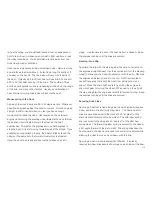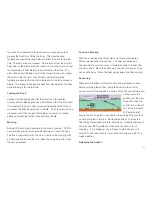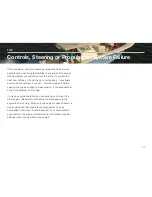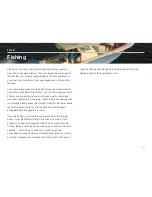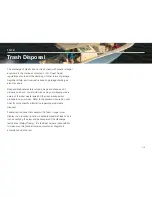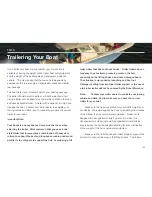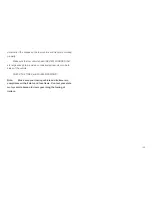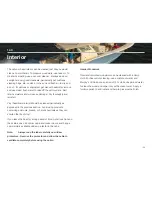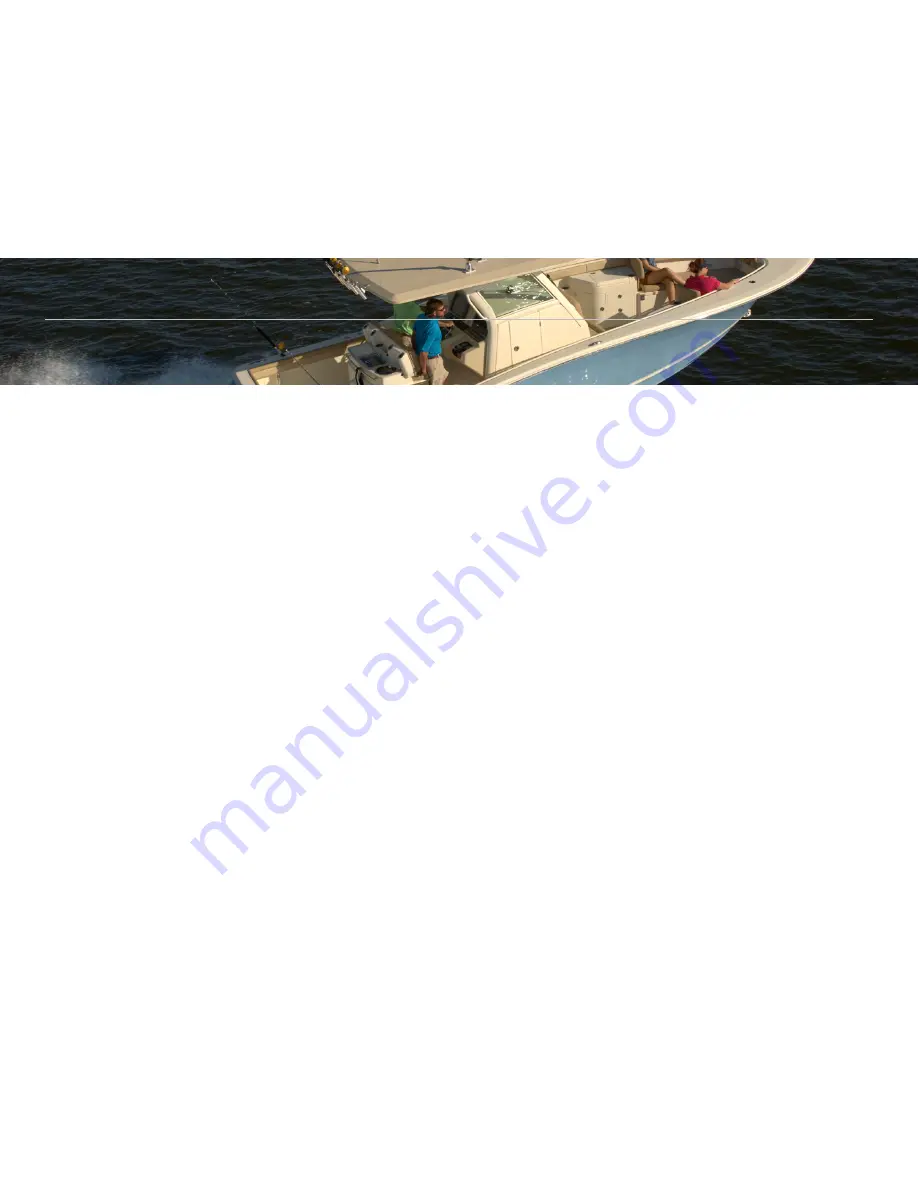
Hull Cleaning-Below The Water Line
When the boat is removed from the water, clean the outer bottom
surface immediately. Algae, grass, dirt and other marine growth
is easier to remove while the hull is still wet. Use a pressure
cleaner or a hard bristle brush to clean the surface.
Bottom Painting
If the boat is to be left in saltwater for extended periods, the hull
must be protected from marine growth by antifouling paint.
Because of variations in water temperature, marine growth, and
pollution in di
ff
erent regions, a qualified boat yard in your area
should be consulted when deciding what bottom paint system to
apply to your hull. This is extremely important as pollution and
marine growth can damage fiberglass hulls.
Use only standard antifouling paints and fiberglass wax removers
and primers recommended by the antifouling paint manufacturer
when preparing the hull for bottom paint. Light sanding, just
enough to scu
ff
the gel coat or a skip sand primer system can be
used to prepare the hull for bottom paint. The use of a coating
other than standard antifouling paint or epoxy barrier coatings
are not recommended and will void the hull blister warranty.
Do not allow the hull antifouling paint to contact the outboard
motors. Most antifouling paints designed for hull bottoms
contain copper and can cause severe galvanic corrosion damage
to the motors. Always leave a 1/2” barrier between the hull
bottom paint and outboard motors.
Most bottom paints require some maintenance. Proper
maintenance is especially important when the boat is in saltwater
and not used for extended periods or after dry storage. If the hull
bottom has been painted with antifouling paint, contact your
local boat yard for the recommended maintenance procedures.
Anodes
Sacrificial anodes are installed on the outboard motors, engine
brackets and trim tabs. The anodes are less noble than copper
based alloys, stainless steel and aluminum. They will deteriorate
first, protecting the more noble underwater hardware against
galvanic corrosion.
14.1
Exterior Hull and Deck
124
Summary of Contents for 320 LXF
Page 1: ...320 LXF Scout Boats OWNER MANUAL ...
Page 2: ...Chapter 1 Owner s Information Warranty Certification and Boat Information ...
Page 11: ...Chapter 2 Propulsion A guide to your boat s propulsion system ...
Page 32: ...Chapter 4 Fuel System An overview of the fuel system of your boat ...
Page 40: ...Chapter 5 Electrical System An overview of the electrical system of your boat ...
Page 54: ...Chapter 6 Fresh Water System An overview of the fresh water system of your boat ...
Page 59: ...Chapter 7 Raw Water System An overview of the raw water system of your boat ...
Page 65: ...Chapter 8 Drainage System An overview of the drainage system of your boat ...
Page 70: ...Chapter 9 Ventilation System An overview of the ventilation system of your boat ...
Page 73: ...Chapter 10 Exterior Equipment An overview of the exterior equipment on your boat ...
Page 83: ...Chapter 11 Interior Equipment An overview of the interior equipment on your boat ...
Page 88: ...Chapter 12 Safety Equipment An overview of the safety equipment on your boat ...
Page 99: ...Chapter 13 Operation A general guide to operating your boat ...
Page 124: ...Chapter 14 Routine Maintenance A guide to keeping your boat running in good condition ...
Page 147: ...Chapter 16 Appendix Reference documents logs and schematics for your boat ...
Page 154: ...153 ...
Page 155: ...154 ...
Page 156: ...155 ...
Page 157: ...156 ...
Page 159: ...158 ...
Page 160: ...159 ...
Page 162: ...161 ...

